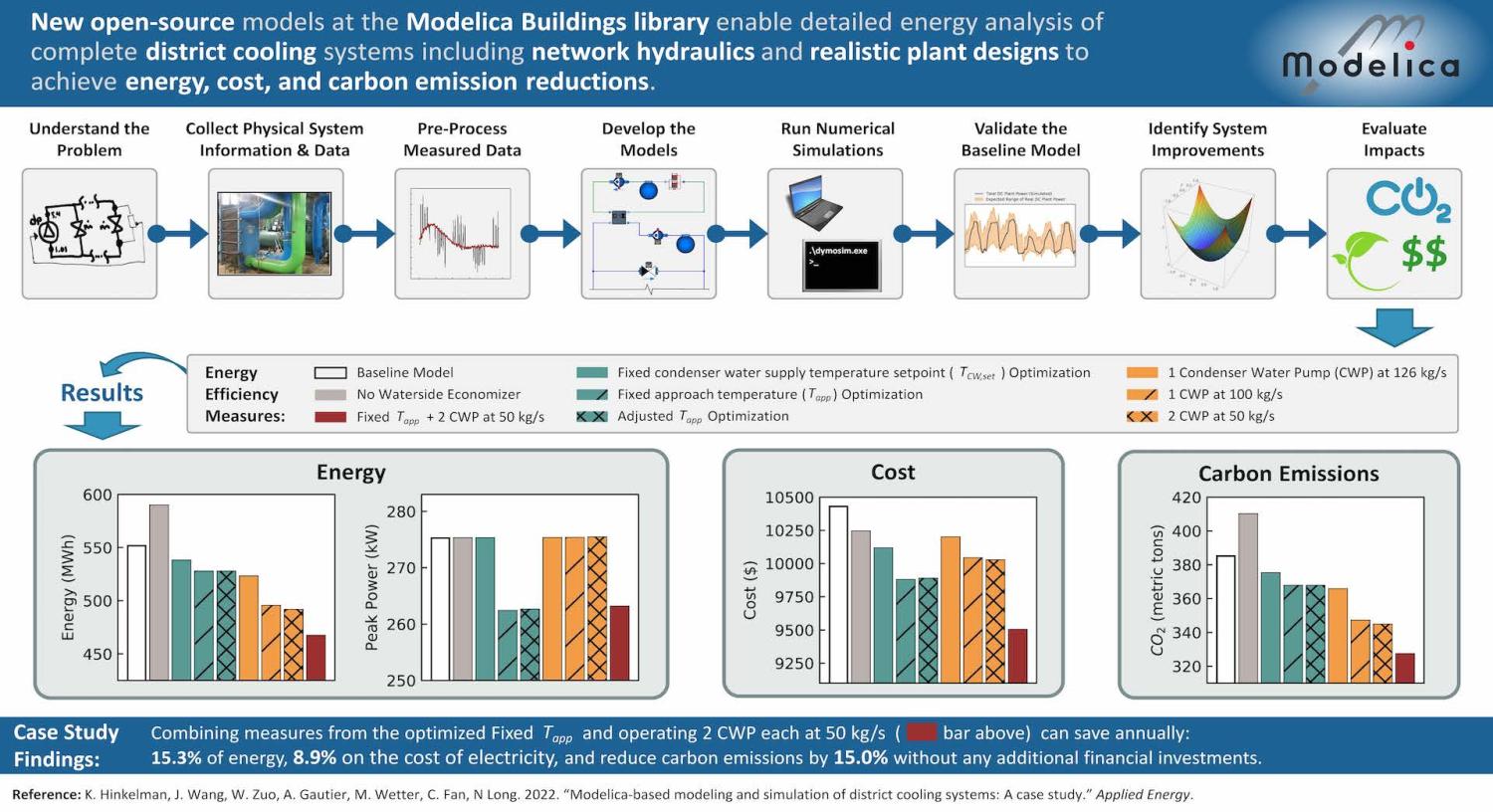Paper on Modelica-based Modeling and Simulation of District Cooling Systems has been published in Applied Energy.

While equation-based object-oriented modeling language Modelica can evaluate practical energy improvements for district cooling systems, few have adopted Modelica for this type of large-scale thermo-fluid system. In collaboration with LBNL and NREL through the URBANopt-Modelica project, this work is one of the first district cooling case studies to include hydraulics in piping networks alongside plant models featuring realistic mechanical systems and controls. For a real-world case study at the University of Colorado Boulder, we identified investment-free annual savings of 15% energy, 9% electricity cost, and 15% carbon emissions. The models used in the case study are open source released at the Modelica Buildings Library version 8.1.0.
This work has been published under the title “Modelica-based modeling and simulation of district cooling systems: A case study” in the journal Applied Energy. The full paper is available here.
The first author of this paper, Kathryn (Katy) Hinkelman, is a Ph.D. student in the SBS Lab. Her research focuses on modeling and simulation of community-scale energy systems using Modelica language, including traditional district heating and cooling systems and innovative biomimetic (nature imitating) designs for future sustainable and resilient communities.
Congratulations to Katy on publishing this paper!

